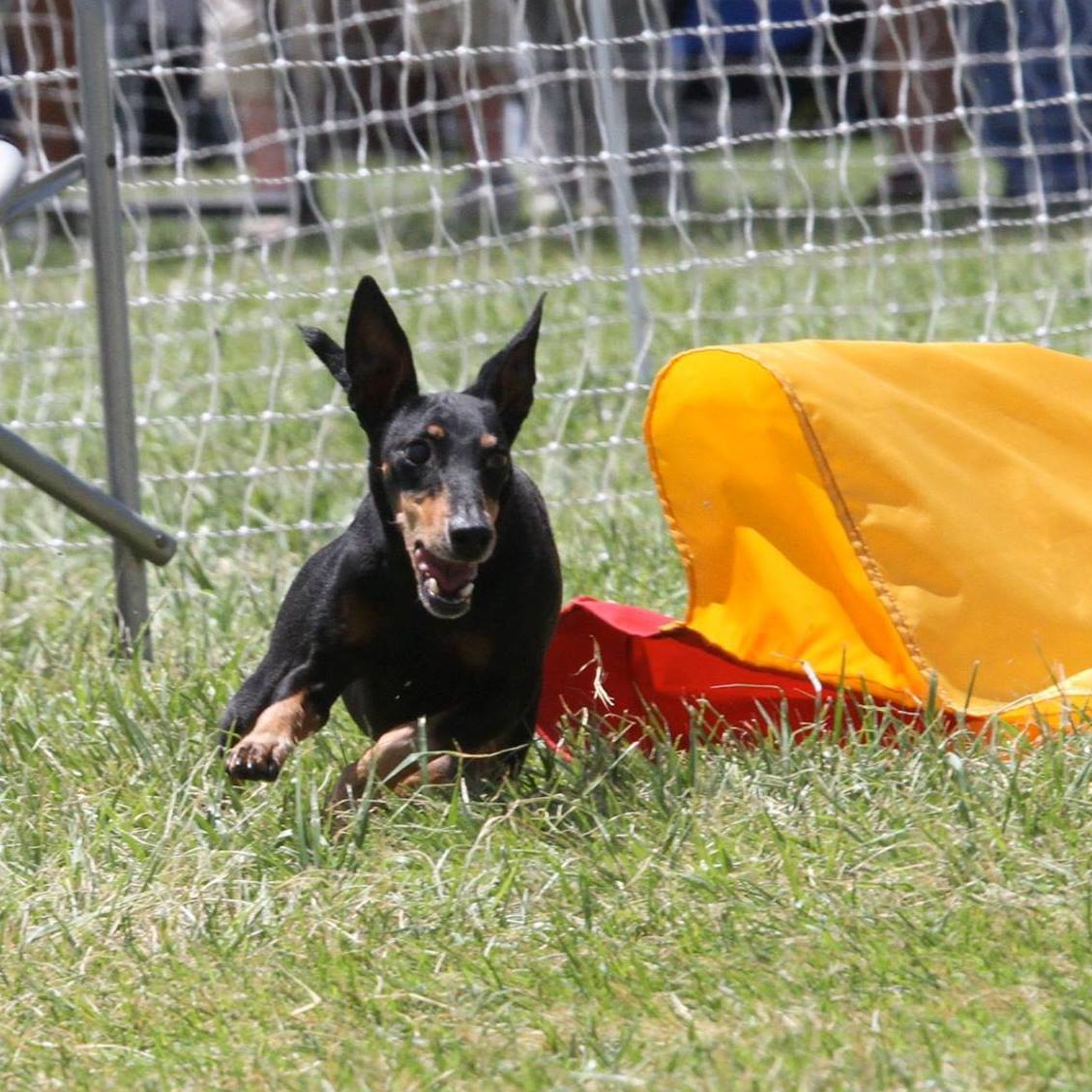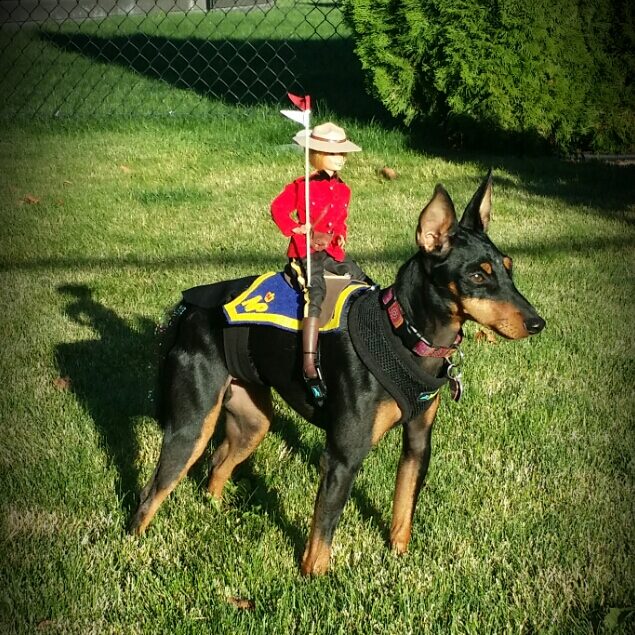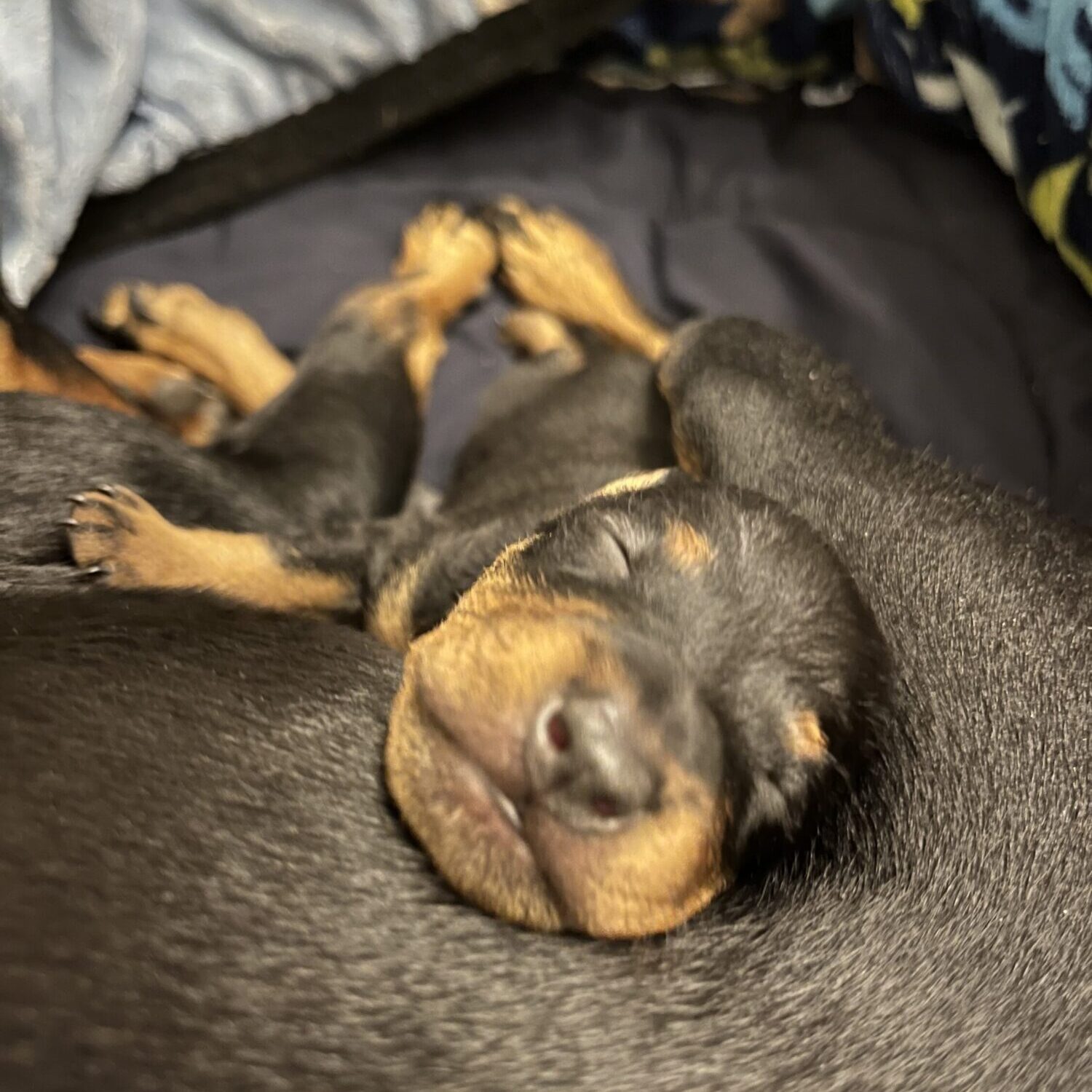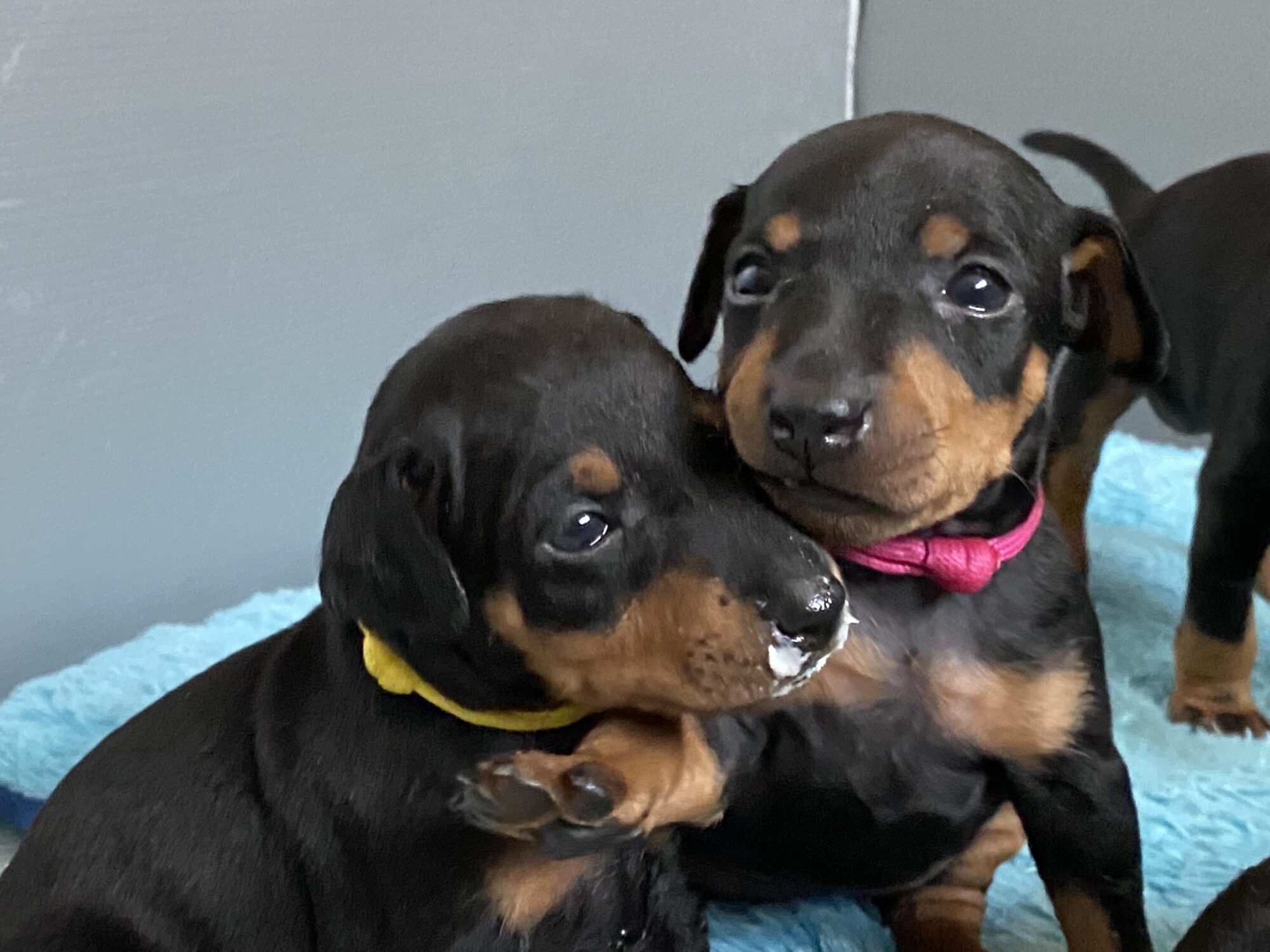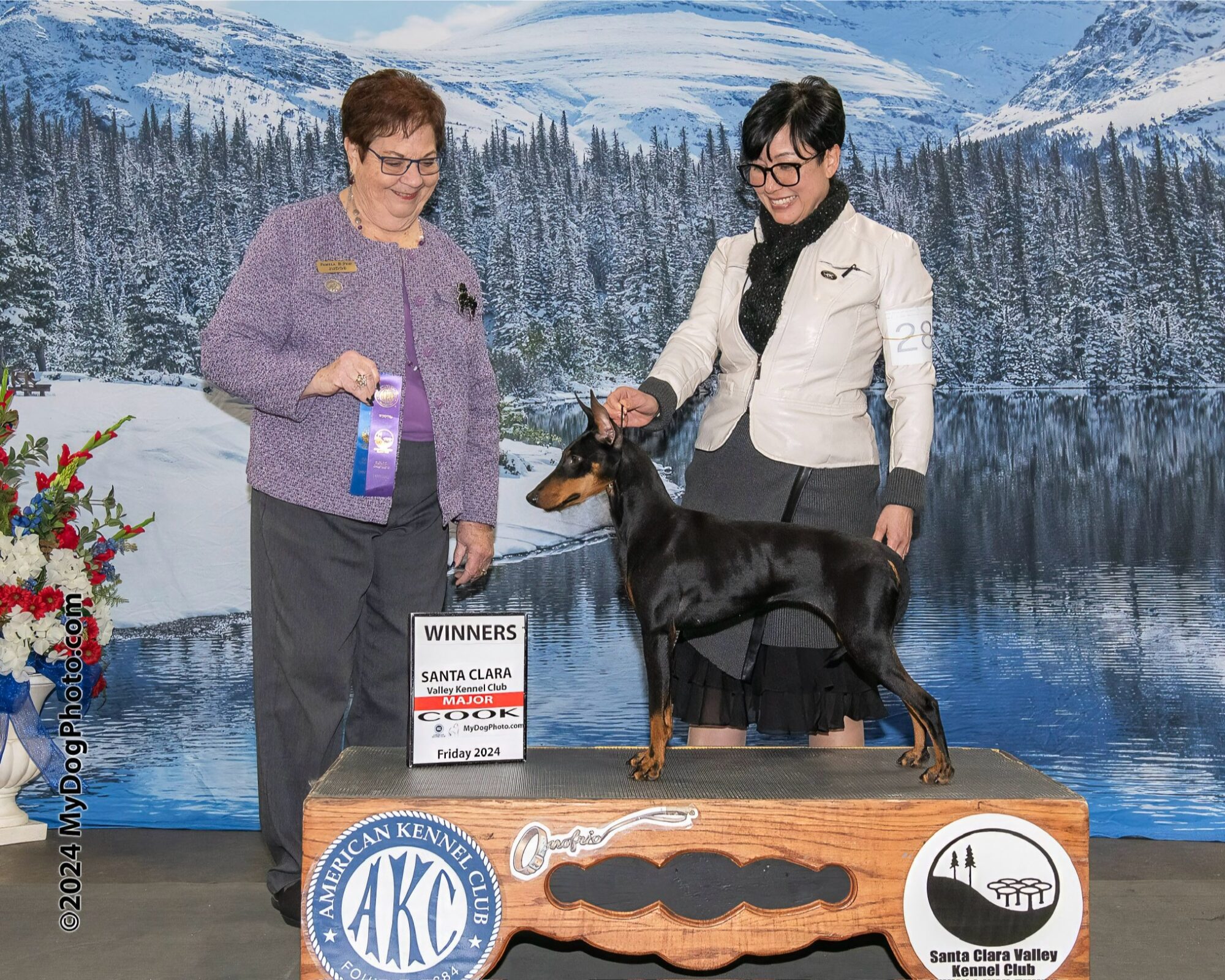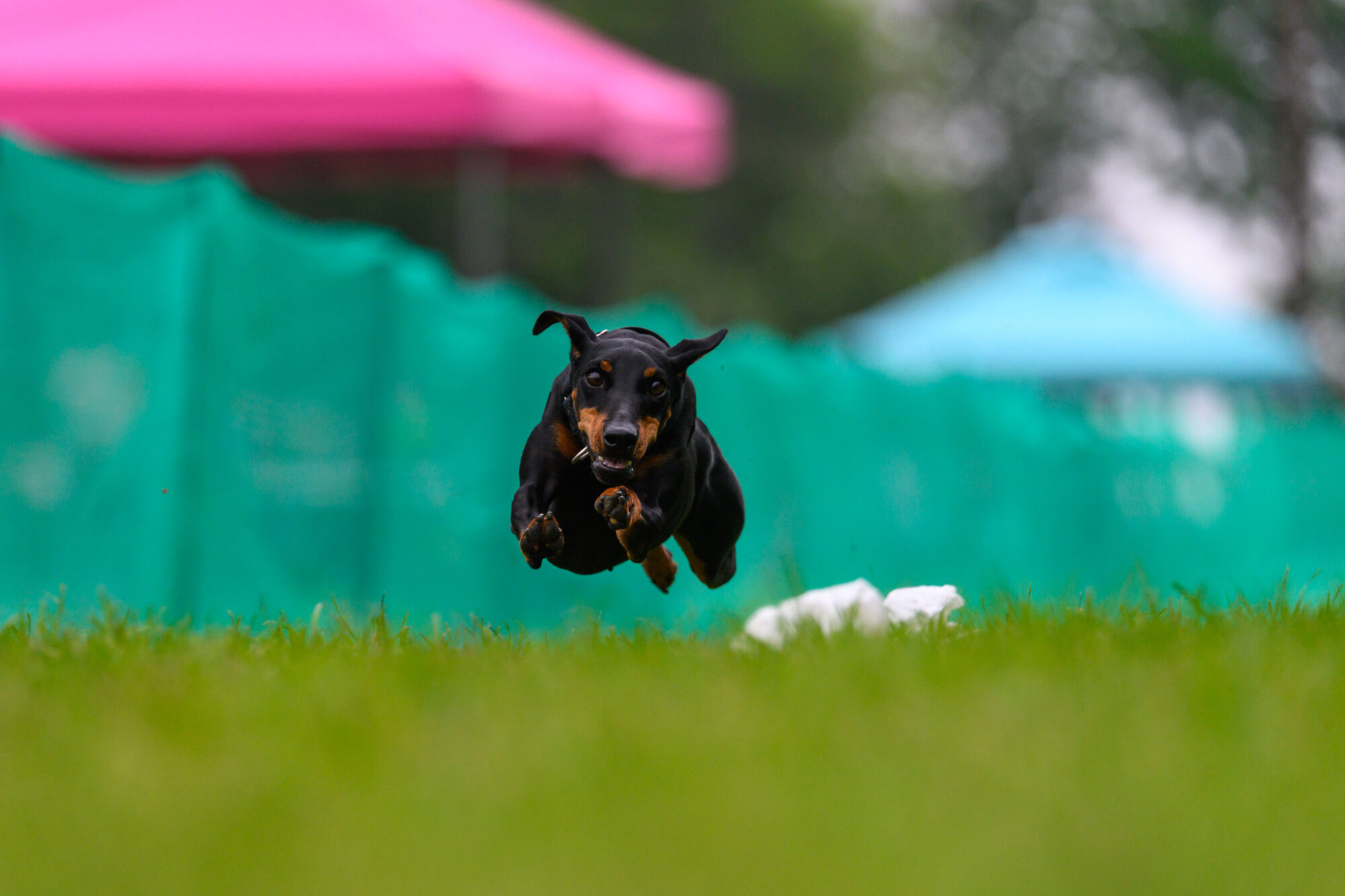The best thing about Manchesters is that they want to do whatever you are doing. Going for a walk? They’re ready to roll. Gardening? They have no problem getting their paws dirty. Lazy day on the couch? Make room under the blankets. Manchesters just want to be with you.
Your Trusted Expert in Breeding and Maintaining Healthy Manchester Terriers
All About Manchester Terriers
Personality:
Bright, agile, keenly observant, “The Gentleman’s Terrier”History and Characteristics:
The Manchester Terrier may be the oldest of the terrier breeds, as old as the British Isles, from which they originate as the direct descendant of the now-extinct Black-and-Tan Terrier. The modern Manchester Terrier was developed by Mr. John Hulme in England, nearly four centuries after Dr. Caius first documented the Terrier in “De Canibus Britannicis:” a rough-coated, crooked legged, black and tan dog. Throughout the 1700’s, historic art depicts a “black and tan” or “rat terrier” closely resembling the present-day Manchester Terrier. In 1800, Syndenham Edwards published in his “Cynographia Britannica” illustrating a Manchester Terrier. Mr. Hulme is attributed to introducing Whippet, and potentially Italian Greyhound and Dachshund to add swiftness, great power, stamina, and courage. This infusion is responsible for the agile movement and a fluid, flowing physique.
The Manchester Terrier is a terrier with an “off” button. They are clownish in nature and a keen watchdog, also quite athletic. They are incredibly affectionate and loyal to their people. Some Standard Manchesters can handle longer runs, depending on the dog and body structure. For the Toy Manchesters, a simple walk or maybe a 2-mile slow jog would be appropriate. The Manchester is a total gamer for anything. They will happily follow you on a trail hike, or curl up next to you under a blanket for TV time. They are called “The Gentleman’s Terrier” for their sophisticated habits and tendency for cleanliness.
Fun Fact About Manchester Terriers
How Popular Are Manchester Terriers?
Service to Humans:
Manchester Terriers were originally bred as ratters and for coursing rabbits. The Black and Tan Terrier predecessor to the Manchester was used in the rat pits, which was an entertainment and gambling venue in the 1800s where dozens of rats were emptied into a square, wooden pit, surrounded by spectators, and a terrier was released to see how many rats could be killed within a certain time limit. A famous, 5-pound, Toy Manchester Terrier called “Tiny” is credited with dispatching over 300 rats in 54 minutes, 50 seconds. Nowadays, Manchester Terriers serve as companion animals and, like most dogs, are fantastic for emotional support.Prominent Canines
Famous Manchester Terriers:
- President Teddy Roosevelt had a Manchester Terrier named “Blackjack.”
- Queen Victoria had a Black-and-Tan Terrier named “Jack Black.”
Notable Champions:
- MBISS GCHB Levendi's Talk Nautical to Me at Noble FDC HOF ROM "Navy"
- MBISS GCH Levendi's Strategic Mobility "Stryker"
- CH Levendi's Loved You Before I Met You (Kokopelli puppy) "Bliss"
- CH Levendi's Nauti Midnight Enchantments (Kokopelli puppy) "Harper"
- GCHG Bayside's Destined For The Garden "Madison"
Breeder Insights
Kokopelli (and Kokopelli-adjacent) Manchester Terriers in Action:
Manchester Terriers are gamers for anything with you whether it is an adventure, or a lazy day on the couch, they’ve got you covered!
What We Love About Manchester Terriers:
- Funny, active little clowns (with an “off” switch)
- Dedicated, loyal to their person: will be your shadow
- Excellent family dog
- Versatile athlete: excels at agility, barn hunt, rally, racing, earthdog, obedience, conformation, and fast CAT
Be Aware of...
- Exercise – Moderate exercise is good for this breed: daily walks are perfect.
- Grooming – Little grooming is required; a baby wipe and short bristle brush go a long way. Weekly nail trims are recommended.
- Dental – typical small dog mouth: requires regular care; daily brushing is recommended and annual dental exams/cleanings
- Shedding – Minimal shedding of short, dark hair: not a big problem for cleanliness, but not hypoallergenic.
- Protective – Manchesters will protect their family, sometimes even from visiting friends
- Socialization – best to meet an abundance of new people throughout puppyhood; they are generally friendly with other dogs.
Breed Health
Health Predispositions:
- Hypothyroidism/Autoimmune thyroiditis
- Von Willebrand disease
- Cardiomyopathy
- Legg-Calve-Perthes (LCP) disease
- Congenital deafness
- Progressive retinal atrophy (PRA)
Health Clearances Recommended for Breeding a Manchester Terrier (more on each of these below):
- Thyroid OFA evaluation (Standard & Toy required)
- Von Willebrand Disease I (VWDI) DNA test (Standard & Toy required)
- Legg-Calve-Perthes OFA (Toy required; Standard recommended)
- Juvenile Dilated Cardiomyopathy (JDCM) DNA test (Toy required; Standard recommended)
- Xanthinuria, Type IIA DNA test (Toy required; Standard recommended)
- Cardiac OFA examination (Standard required; Toy recommended)
- Ophthalmologist OFA evaluation (Standard required; Toy recommended)
- Patellar Luxation OFA (Standard & Toy recommended)
- Congenital Deafness OFA evaluation based on BAER testing (Standard recommended)
Spaying/Neutering Recommendations:
Kokopelli veterinarians are as concerned as any dog-lover about the overpopulation of unwanted dogs which results in euthanasia of so many healthy dogs every year. Our veterinarians, however, recognize that dogs belonging to responsible families, who keep their dogs on a leash or contained within fenced yards, are not contributing to this problem. Spaying or neutering these responsibly controlled dogs does nothing to decrease the surplus population of stray dogs. When we counsel responsible dog owners about spaying and neutering, our advice is focused on health and behavioral concerns related to reproductive status (whether a dog is spayed, neutered, or intact). Various options exist beyond the traditional spay or neuter procedure, including vasectomy or Suprelorin implants for males (or just leaving them intact), and ovary-sparing spays or laparoscopic spays for females. We encourage you to investigate the hyperlinks provided here, and to reach out to our clinic for a consult if you would like to discuss your specific questions about your canine companions.
Future Owner Tips
Kokopelli Support for Breeders:
The mission of Kokopelli Assisted Reproductive Services at Kokopelli Veterinary Center is to fully support responsible breeders in creating the healthiest puppies possible. Part of that mission is advising breeders in health testing and advising potential puppy buyers in what they should be considering when looking at adopting a puppy.
Temperament:
One of the absolute joys of working with Kokopelli breeders is the wonderful temperament of the majority of the dogs we see. We can usually tell within seconds of entering a room if the dog is trained as a show dog or in some specific competition by the way their dog behaves towards us. Dogs who belong to people who show, train, or otherwise compete have confidence and are not afraid of strangers. They know how to listen to their owners and behave appropriately. Different breeds are expected to have different temperaments, but no dog of any breed is intended to be fearful or aggressive in non-threatening circumstances. Temperament is partly determined by genetics and partly by socialization and training. A good breeder will consider proper temperament as equally important as good physical health. An excellent breeder will practice appropriate socialization of puppies from day one and then each and every day until that puppy joins their forever family. At that point, it is imperative that the new family take over proper socialization and training.What to Ask the Breeder if You are Considering Bringing a Manchester Terrier into Your Home:
The top goal of every responsible breeder is not to make money on a litter, but to produce the healthiest puppies possible. Dedicated, responsible breeders are passionate about their breed and want to contribute to the continuation of their breed by placing healthy puppies into caring homes. As such, responsible breeders will only breed dogs with the appropriate temperaments and who have also been tested for diseases of concern for their specific breed. The sire and dam of your prospective puppy should have been tested minimally for hypothyroidism, Legg-Calve-Perthes disease, von Willebrand’s disease, cardiac disorders, eye disorders, and xanthinuria type I (depending on whether it is a Toy or Standard size; see health clearance section on each of these below) and those records should be available to you. Ideally breeders will also be performing other appropriate health clearances (also described below). You can use the list below to have an informed conversation with the breeder of your prospective puppy to try to make it as likely as possible that you will be adopting as healthy a Manchester Terrier as possible, or that at least you are aware of the potential health risks and challenges your new puppy may face.Breed Health Certifications:
Responsible breeders go to great effort and expense to ensure that the puppies they produce are as healthy as possible. They know that the puppies they produce reflect back on them; their kennel’s reputation among their peers means more than the fast buck they can get selling puppies produced by cutting corners. Responsible breeders first and foremost love their breed and their goal is to improve the health of the breed through responsible decisions on who and how they breed. A large part of this effort is done by conducting health testing on potential breeding dogs and bitches and then using that information, along with considerations of conformation, temperament, genetic relatedness, and other factors in choosing the best matches for breeding. The following is a list of health testing that can or should be done in Manchester Terriers prior to making a breeding decision:
- Thyroid OFA: Hypothyroidism is a condition where the thyroid gland does not produce enough of the hormone thyroxine. This has negative effects on the metabolism and dogs tend to gain weight, even if food intake does not increase. They may also suffer from hair loss and skin conditions. The condition is easy to diagnose with a blood panel and is easily treated with thyroid supplements. The condition usually manifests later in life, but can start at any time. General recommendations are to test annually until 4 years of age, and then every 2 years after that. At Kokopelli Veterinary Center, for medical cases, we generally recommend screening for free T4 hormone first. If that is low, then we recommend a full thyroid panel sent to Michigan State University. For the thyroid OFA certification, a full panel must be submitted to MSU. Thyroid clearances are required by the American Manchester Terrier Club (AMTC) for both Standard and Toy Manchester Terriers.
- Von Willebrand disease: An important clotting factor in dog blood is von Willebrand factor (vWf). A genetic mutation causes some dogs to have a reduced amount of vWf, causing a decrease in their blood’s ability to clot. Clinical signs include frequent bruising, nose bleeds, prolonged bleeding from minor injuries or during or after surgical procedures. The disease is inherited as an autosomal recessive trait. This means that a dog must have two copies of the mutated gene to be affected and have the disease. Affected dogs should never be bred. The trait shows variable expressivity, which means that each individual has a variable degree of severity of the disease. Some affected dogs have only slightly slower clotting times and other affected dogs have trouble clotting at all. If a dog has only one copy of the mutated gene, it is considered a carrier only and will not express the disease. A carrier dog may still be bred, but only to a mate who is not a carrier, i.e., a dog that is clear of the affected gene. Genetic tests can easily be done at multiple veterinary genetics labs around the country. Von Willebrand clearances are required by the AMTC for both Standard and Toy Manchester Terriers. Clinicians at Kokopelli Veterinary Center can help you understand how to submit genetic samples and interpret results.
- Legg-Calve-Perthes OFA: This disease happens primarily in miniature and toy breeds, occurring usually between 4 and 12 months of age. The hip joint is a ball-and-socket joint. The “ball” is the top of the hindleg bone, called the femoral head. With LCP disease, there is an interruption of the blood supply to the femoral head, causing parts of the bone to die and fracture off. Blood supply is usually reestablished, but the remodeling of the bone is imperfect and further fractures and rough remodeling can occur. This process is painful to the dog while it is happening and results in a stiff, uncomfortable joint. While the mode of inheritance is not fully understood, it is clear that a genetic component exists and it is not recommended that affected dogs should breed. Evaluations for LCP are hip radiographs which can be taken on any dog over 12 months of age. The AMTC requires LCP clearances for Toy dogs and recommends LCP clearances for Standard dogs. Radiographs for OFA submission can be taken at Kokopelli Veterinary Center. Please call us to schedule a convenient time for you.
- Juvenile Dilated Cardiomyopathy (JDCM): The ventricles in the heart are heavily muscled and responsible for pumping blood out to the entire body. Dogs with dilated cardiomyopathy have progressive weakening of these strong heart muscles, eventually causing the ventricles the thin, enlarge, dilate, and lose their ability to deliver blood to the body, leading to heart failure and death. With JDCM, this occurs when the puppies are very young, between 2 weeks and 6 months of age, with an average life expectancy of 12 weeks. A genetic test exists at the University of Pennsylvania Veterinary Genetics Lab that requires submission of a cheek swab or blood sample. The disease is inherited as an autosomal recessive trait. This means that a dog must have two copies of the mutated gene to be affected and have the disease. Affected dogs develop the disease and die as puppies. If a dog has only one copy of the mutated gene, it is considered a carrier only and will not express the disease. A carrier dog may still be bred, but only to a mate who is not a carrier, i.e., a dog that is clear of the affected gene. Breeding two carrier individuals will result in some affected puppies. The AMTC requires JDCM clearances for Toy dogs and recommends JDCM clearances for Standard dogs. Clinicians at Kokopelli Veterinary Center can help you understand how to submit genetic samples and interpret results.
- Xanthinuria, Type IIA: A mutation in a couple of enzymes in the body that help in metabolism causes the accumulation of a protein called xanthine in the urine. Xanthine will form crystals, and eventually stones, in the bladder and kidney. Affected dogs will urinate more frequently, often inappropriately in the house. They may have blood in the urine or may develop life-threatening urinary obstructions. Crystals in the kidneys can lead to kidney disease. A genetic test exists at the University of Minnesota Veterinary Genetics Lab that requires submission of a cheek swab or blood sample. The disease is inherited as an autosomal recessive trait. This means that a dog must have two copies of the mutated gene to be affected and have the disease. Affected dogs develop the disease and often require intervention, including sometimes surgery to remove stones and strict dietary management. If a dog has only one copy of the mutated gene, it is considered a carrier only and will not express the disease. A carrier dog may still be bred, but only to a mate who is not a carrier, i.e., a dog that is clear of the affected gene. Breeding two carrier individuals will result in some affected puppies. The AMTC requires xanthinuria clearances for Toy dogs and recommends xanthinuria clearances for Standard dogs. Clinicians at Kokopelli Veterinary Center can help you understand how to submit genetic samples and interpret results.
- Cardiac OFA evaluation: This exam must be performed on dogs at least 12 months of age by a board-certified veterinary cardiologist. Using doppler ultrasound, the cardiologist thoroughly evaluates the anatomy and function of the heart. Two basic tiers of heart disease clearance are evaluated: congenital and adult-onset diseases. Congenital disorders are present at birth and are detectable anytime the dog is examined. Once a dog has been cleared for congenital disorders, that clearance is good forever. Adult-onset disorders might not be obvious when examining younger dogs. As such, clearance for adult-onset conditions is only good for one year from the time of the exam. The AMTC requires cardiac clearances for Standard dogs and recommends cardiac clearances for Toy dogs. Cardiac OFA examinations are performed at Kokopelli Veterinary Center a few times every year. Please contact our front desk to make an appointment for your dog.
- Companion Animal Eye Registry (CAER): Eye diseases are often progressive and some are not detectable until a dog ages. It is recommended that breeding dogs have annual CAER examinations, which must be performed by a board-certified ophthalmologist. The AMTC requires eye clearances for Standard dogs and recommends eye clearances for Toy dogs. Eye disease OFA clinics are held a few times a year at Kokopelli Veterinary Center. Please call our front desk to schedule your dogs for our next clinic.
- Patella OFA: Medial patellar luxation is a condition more common in small breed dogs. The patella is the knee cap. Luxation means that it pops out of place. Medial means it pops out to the inside of the leg. The condition may be diagnosed by any veterinarian (no specialty certification required). The vet will examine the gait of the dog and palpate both hind legs, extending and bending the stifle (knee) joint, feeling for laxity in the joint. If any luxation is palpated, the severity is graded from 1 to 4. Grades 1 and 2 are less serious and may not show evident clinical signs until the dog is older and usually involves a skipping gait where the hind leg(s) are held up and touch the ground every few steps. Grades 3 and 4 are more serious and usually present with clinical signs at a younger age, which may include a crouching, bow-legged stance. Pain may be associated with the luxation, but not always. This condition is usually heritable and so breeding affected animals is discouraged. The AMTC recommends all breeding dogs have patella clearances. Patella OFAs are offered by Kokopelli Veterinary Center and only require an appointment at the client’s convenience. Dogs should be at least 12 months before being evaluated for OFA certification. Please call our front desk to make an appointment.
- Congenital Deafness OFA: Manchester Terriers (standards) are one of many breeds in which congenital deafness is a concern. Deafness is usually associated with the white color trait and, in Manchester Terriers, with the piebald gene. Heritable deafness almost always manifests in puppies; deafness that is acquired as an adult is rarely, if ever, genetic, but instead due to infections, injury, toxicity, or age-related dysfunction. While congenital deafness is known to be genetic, the specific genetic mode for inheritance has not been determined and a genetic test is not yet available. Deafness, both unilateral and bilateral, can be determined at 35 weeks of age using the Brainstem Auditory Evoked Response (BAER) test and is recommended for Manchester Terriers that are predominantly white and/or known to have deafness in their line. Affected dogs, even unilaterally deaf dogs, should not be bred and the breeding that produced the affected puppies should not be repeated. The AMTC recommends BAER clearances for Standard dogs. BAER testing can be performed by a board-certified veterinary neurologist, audiologist, or a veterinarian experienced with the technique.
Links for Further Information:
- American Kennel Club—Toy Manchester Terrier
- American Kennel Club—Standard Manchester Terrier
- American Manchester Terrier Club
- The Kennel Club: Manchester Terrier
View our educational webinar series and learn more about how to raise healthy animals.
Please reach out to us for any questions or help. Nothing makes us happier than helping create situations where the human/animal bond can flourish.
Schedule your pet’s consultation today.







